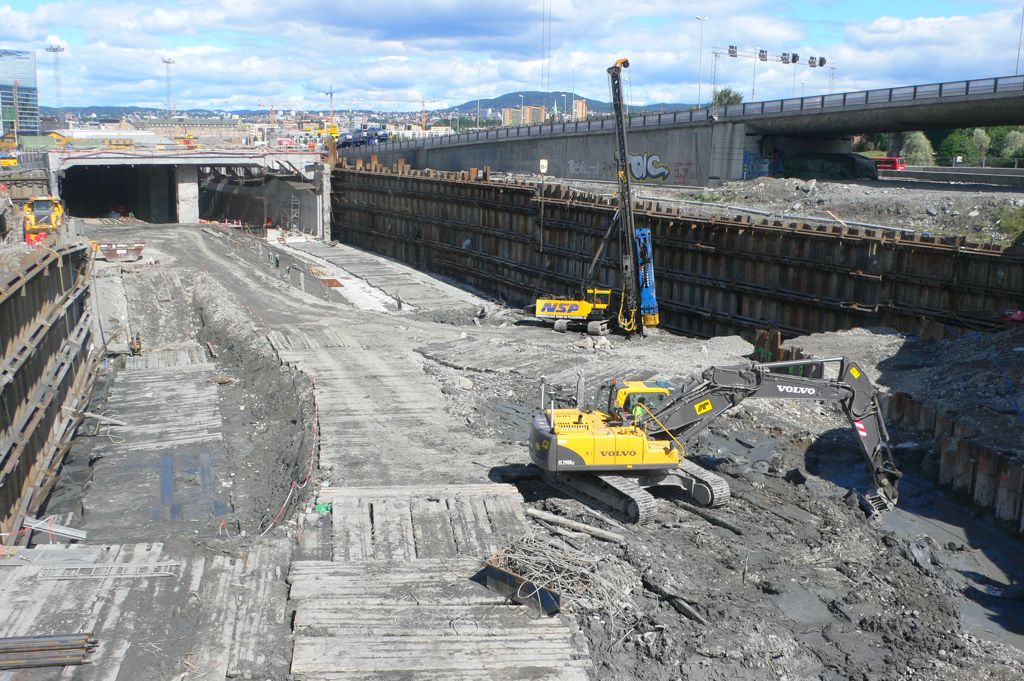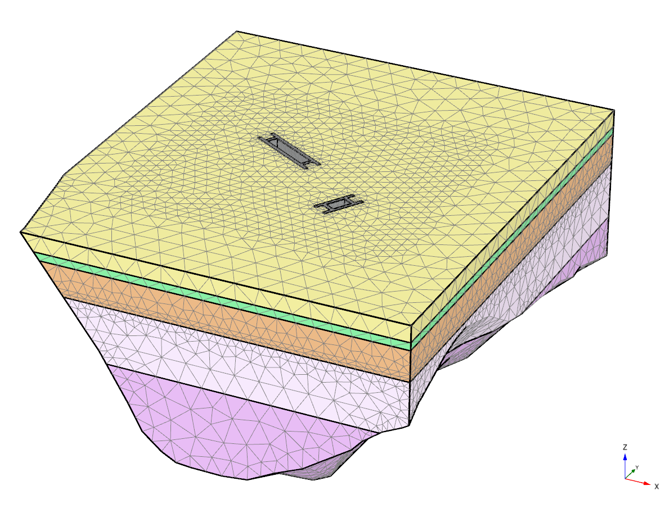3D modelling of stability and deformations induced by slurry trenches in soft clays
The main objective of this master thesis is to verify by 3D finite element analyses (FEA) if or to what the analytical method is sufficiently reliable for any geometry and depth of a slurry wall.

A significant amount of data exists on the stability and deformations of slurry trenches in Norwegian soft clay conditions. These data include measurements of, i.a., settlements, deformations at depth, pore pressures and trench wall deformations, including cases where the trenches were deliberately brought to failure.
Analytical approaches for assessing trench stability in 3D exist, e.g., the method developed by G. Aas in 1976. The main objective of the proposed research is to verify by 3D finite element analyses (FEA) if or to what the analytical method is sufficiently reliable for any geometry and depth of a slurry wall.
A basis for this study is to make use of data collected from slurry trenches in Kongens Gate (1969), Vaterland (1970), Studenterlunden (1970), and Ellingsrud (1972), varying in planar shape from 1×1 to 1×10 m and depths of trenches typically 15 to 25 m. These data have to a little extent, been analysed using modern analysis tools, except for the Vaterland 1×5 m trench.
It is therefore proposed to revisit these data using 3D FEA. The geometric effects related to the trench shape, soil strength parameters, and observed undrained creep effects should be investigated by back-calculating the measurement data.

Specifically, the work should aim to:
- Investigate the ability of FEA to capture the measured soil behaviour.
- Benchmarking simplified methods (e.g., the one by G. Aas, 1976) against the FEA.
- Investigate how strength parameters should be determined by using FEA in combination with the results of soil investigations.
- See if measurements of deformation/creep can be used to predict a forthcoming failure by looking at the relationship between creep rate and the strong mobilisation of the soil.
Ultimately, the project will contribute to assessing the usefulness of different methods for assessing slurry trench stability, including how best to interpret field measurements.

